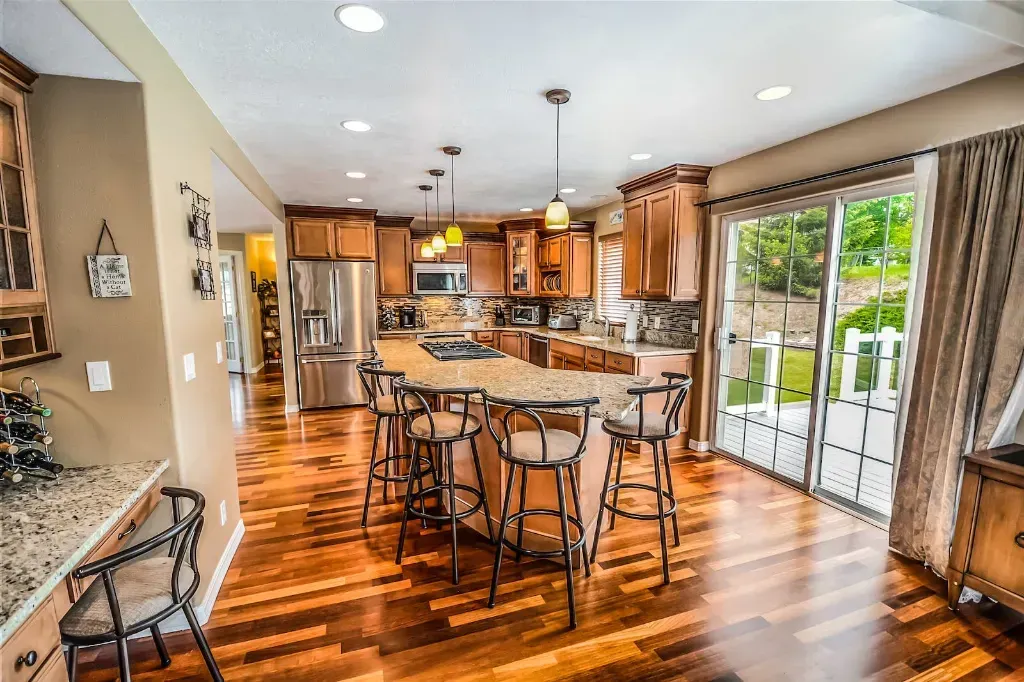The Ultimate Guide to Kitchen Cabinets Installation: Tips and Tricks
Installing kitchen cabinets is a big job, but it doesn’t have to be overwhelming. With the right tools, materials, and instructions, you can easily install your own kitchen cabinets. This guide will provide you with all the information you need to know about installing kitchen cabinets, including tips and tricks for making the process easier.
Tools Needed for Installing Kitchen Cabinets
Before you begin installing your kitchen cabinets, make sure you have all the necessary tools on hand. Here is a list of the essential tools needed for installing kitchen cabinets:
- Tape measure
- Level
- Drill and drill bits
- Screwdriver
- Hammer
- Circular saw
- Utility knife
- Caulk gun
- Stud finder
- Safety glasses
Having these tools on hand will make the installation process much smoother and easier. Make sure to double-check that you have everything before beginning.
Preparing Your Kitchen Cabinets for Installation
Before you start installing your kitchen cabinets, there are a few steps you should take to ensure that everything goes smoothly. First, make sure that all of your cabinet pieces are in good condition and free from any damage or defects. Next, check that all of the pieces fit together properly and that they are compatible with your existing cabinetry. Finally, make sure that all of the hardware is included with your cabinets and that it is in good working order.
Once you have checked all of these things, it’s time to begin preparing your space for installation. Start by measuring the area where you plan to install your cabinets and mark off any walls or other surfaces that may be in the way. Then remove any existing cabinetry or countertops if necessary. Finally, clean up any debris or dust from the area so that it is ready for installation.
Installing Your Kitchen Cabinets
Now that your space is prepared and all of your tools are ready, it’s time to start installing your kitchen cabinets! Begin by attaching the base cabinets to each other using screws or nails. Make sure they are level before moving on to the next step. Once all of the base cabinets are attached, attach them to the wall studs using screws or nails as well. If necessary, use shims to level out any uneven areas.
Next, attach the upper wall cabinets to each other using screws or nails as well as attaching them to the wall studs with screws or nails. Again, use shims if necessary to level out any uneven areas. Finally, attach any additional hardware such as handles or knobs as desired.
Finishing Touches
After all of your kitchen cabinets are installed, it’s time for some finishing touches! Start by caulking around any seams between cabinet pieces as well as around any edges where two different surfaces meet (such as between a cabinet and a wall). This will help prevent water damage and keep everything looking neat and tidy. Next, add trim pieces around doors and drawers if desired for an extra decorative touch. Finally, add any additional hardware such as handles or knobs as desired.
Conclusion
Installing kitchen cabinets can seem like a daunting task at first glance but with proper preparation and knowledge it can be done easily! Make sure you have all of the necessary tools on hand before beginning and take care when preparing your space for installation. Follow these steps carefully and soon enough you’ll have beautiful new kitchen cabinets installed in no time!
- Measure Twice, Cut Once
One of the most important tips for installing kitchen cabinets is to measure twice and cut once. Make sure you take accurate measurements of your space and cabinets before making any cuts. This will help prevent any mistakes and save you time and money in the long run.
- Use a Stud Finder
When attaching your cabinets to the wall, it’s important to find the studs behind the drywall for added support. Use a stud finder to locate the studs and mark their location on the wall. This will help ensure that your cabinets are securely attached to the wall.
- Level Your Cabinets
Leveling your cabinets is crucial for both the appearance and functionality of your kitchen. Use a level to ensure that your cabinets are straight and even. Adjust them as necessary using shims until they are level.
- Install Cabinets Before Countertops
It’s important to install your cabinets before your countertops. This will help ensure that your countertops fit perfectly and are level. If you install your countertops first, you may have to make adjustments to your cabinets to make them fit properly.
- Use a Caulk Gun for a Professional Finish
Using a caulk gun to seal the gaps between your cabinets and walls or between two cabinet pieces will give your kitchen a professional finish. It will also help prevent water damage and keep your kitchen looking clean and neat.
- Add Lighting Under Your Cabinets
Installing lighting under your cabinets can add both function and style to your kitchen. It can provide extra light for cooking and prep work and create a warm and inviting atmosphere in your kitchen.
- Consider Custom Cabinets
If you have a unique space or specific design in mind, consider custom cabinets. Custom cabinets can be tailored to your exact specifications and can provide a one-of-a-kind look for your kitchen.
Installing kitchen cabinets can be a daunting task, but with the right tools and knowledge, it can be done easily. By following these tips and tricks, you can ensure that your kitchen cabinets are installed correctly and look great for years to come.


